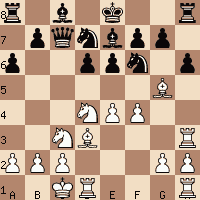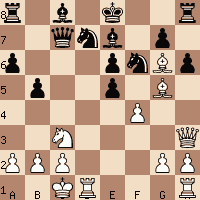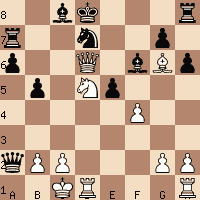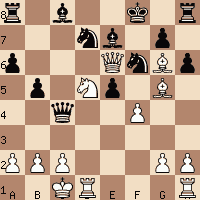Develop a clear strategy for the openings you decide to play. It’s one of the best things you can do to improve your results.
Here are some of the best decisions you can make as you build your opening repertoire:

Principles for Building Your Repertoire
- Choose openings that fit your style.
- Choose openings that reduce the need to learn a great deal of theory.
- Understand the pawn structures that arise out of the openings you play.
All great generals choose their battles wisely. Most importantly, they choose the terrain that best favors their odds of marching to victory.
Today we’ll focus on playing openings that fit your style. If you’re a pretty new player, you might not be completely sure of what your style is quite yet, so here’s the most important piece of advice.
Fit the Opening to Your Personality
You’ll have the greatest odds of success if you find an opening that fits your personality. You should recognize your natural tendencies in one of the following three styles:
The Solid Player
Very patient. Minimizes risk and creates few weaknesses. Expands gradually, and waits for an opportunity to take advantage of his opponent’s mistakes.
This might sound boring. However, it’s a completely valid style, and perfectly describes the styles of former World Champions Karpov and Petrosian.
Choice of Opening
This personality type is best suited for solid openings like the Caro Kan and the French. They will do best by creating a strong fortress that’s difficult to crack.
The Warrior
Willing to take risks. Always looking for a way to seize the initiative. His favorite way to win is by sacrificing pawns or pieces and checkmating the king.
For The Warrior, a chess opening is an opportunity to impose his will upon the opponent. He wants to crush you any way he can.
Choice of Opening
Risk and reward are intertwined on the chess board. In the words of Bobby Fisher, “You have to give squares to get squares.”
The Warrior is willing to play on the edge. He chooses sharp openings like the Sicilian Dragon or the Sicilian Najdorf.
These openings provide fertile ground for combinations and mating attacks. However, they contain great risk, and there’s a lot of theory to learn.
The Artist
Seeks positions rich in ideas. Willing to play the broadest array of positions. Strives for a great deal of complexity and imbalance. This gives him the greatest opportunity to create an original work of art.
The artist is the most strategic of these three types, as he deeply probes the position for hidden ideas which allow him to unfold his gifts.
Choice of Opening
The artist looks for unusual positions with a wide range of possibilities that allow scope for his creativity and imagination.
In general, he will shy away from positions that are too theoretical. That’s because many sharp modern openings are worked out as deep as 25 moves.
In these openings, The Artist’s knowledge of theory would become more important than his ability to create an original work out of his imagination.
A Plan to Build your Repertoire
It takes a good while to build an opening repertoire. Think of it in the same way you would build a house. Just lay down one brick at a time. Here’s a plan:
Commit to spending 4 hours a week. At the end of a year, you’ll have 200 hours invested into the project. By then you’ll have an opening repertoire that will enable you to compete in rated tournaments and win plenty of games.
Finally, in the words of one grandmaster, “the purpose of the opening is to get a playable middle game.” As long as you achieve that goal, your opening has been successful.
We’re almost ready to look at a recent Najdorf Sicilian I played from the White side. It’s a great game that illustrates the huge impact the choice of an opening has on the type of contest you create.
I played the game below on the internet with a 2-12 time control. That means each side starts out with 2 minutes and gets 12 more seconds added back to his clock every time he makes a move.
My number one commitment is to give you the best practical advice I’ve learned over 30 years of rated tournament play. Having shared that, before showing the game, here’s my final piece of advice:
Play speed chess with an increment
I HIGHLY RECOMMEND playing speed chess using an increment. It will do a whole lot more for improving your play than a rapid time control like 3=0 for the following reasons:
- The quality of your moves always matters. The game never becomes a “simple race against time.”
- Many more of your games reach balanced endings. This gives you the opportunity to improve that part of your game.
- It enables you to play higher quality games.
- It eliminates the frustration of having your time elapse when you have a large winning advantage.
Illustrative Game: Sicilian Najdorf
George Zeigler – ICC Opponent
Dec 2, 2014
1.e4 c5 2.Nf3 d6 3.d4 cxd4 4.Nxd4 Nf6 5.Nc3 a6 6.Bg5 e6 7.f4 Be7 8.Qf3 Qc7 9.0–0–0 Nbd7 10.Bd3 h6 11.Qh3

We’ve reached a position well-known to opening theory. Black’s most popular response is 11...Nb6. We’ll see why very soon.
11...b5 12.e5
A very dynamic move! What could be the real reason behind it?
12...dxe5 13.Nxe6! fxe6 14.Bg6+

Now we know the reason White played e5.
It’s called a “clearance sacrifice“. That happens when a player sacrifices a pawn in order to open a line for his pieces. The move e5 opened up the diagonal for the Bishop.
We also see an important reason that 13...Nb6 is the most popular move. In that case, the Bishop on c8 would control the e6 square, and the Knight sacrifice would not have been possible.
14...Kf8
He moved to the wrong square. I’m sure in a tournament game with more time, my opponent would have played ...Kd8.
Here’s best play for both sides after that:
14...Kd8 15.Bxf6 Bxf6 16.Qxe6 Qc4 17.Nd5 Qxa2 18.Qd6 Threatening mate on c7 18...Ra7 with a chaotic and unclear position.

The computer says White has a half pawn advantage. However, that half pawn advantage is way less important than understanding what’s happening on the board.
Black has trouble completing his development, and his king is in danger.
White has tremendous piece activity and the initiative.
He’s sacrificed a piece, which means he needs to find a way to convert his advantage into something tangible.
If Black can complete his development and consolidate his position, then White will probably be lost.
In addition, Black has the option of checking on a1 and then capturing on b2.
In summary, it’s an extremely complicated position, and a second best move by either side could quickly become fatal.
15.Qxe6 There’s no stopping mate on f7. 15...Qc4 16.Nd5 resigns

Summary
This game is a great example of the consequences determined by your choice of opening.
At high levels, Black does well with the Najdorf. However, it’s a sharp, risky opening. Black has to know all kinds of theory, and bad things can happen very quickly.
Players who don’t have a lot of time to study chess opening theory are much better off choosing a solid opening like the French Defense or the Caro-Kan for their defense against the King’s Pawn Openings.

Hi, what would be opening ideas for The Artist?